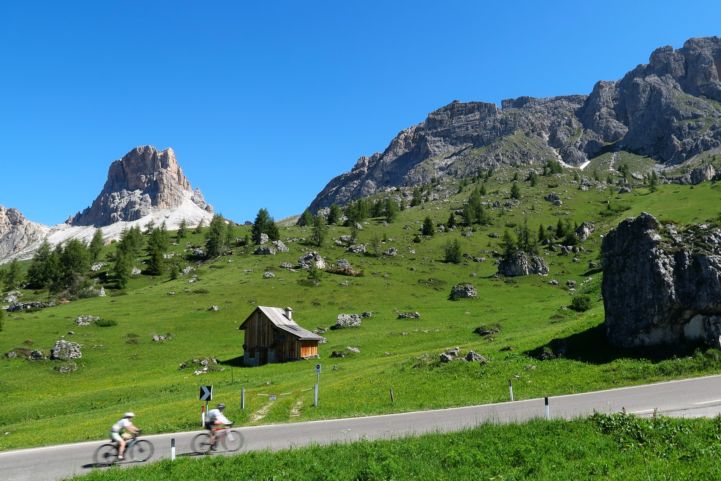Italy, a fast-growing cycling tourism destination
The Third annual report on cycling tourism – Travelling with the bike 2023 (Terzo rapporto italiano sul Cicloturismo – Viaggiare con la bici) has been recently presented at the Cycling Tourism Forum in Bologna, Italy. The study was carried out by Isnart for the Tourism Economy Observatory of the Italian Chamber of Commerce and Legambiente and portrays a very good picture of cycling tourism in Italy. 33 million people – 4.3% of the total tourists visiting Italy – chose to add cycling to their trips last year, and the number of ‘pure’ cycle tourists – the ones that specifically go on a cycling holiday – has more than doubled compared to pre-pandemic levels: 9 million of them have produced a 1-billion-euro impact on the local economy.
The survey – carried out by interviewing more than 20,000 cycling tourists staying for more than two nights in a destination – confirms the trends of the latest EuroVelo web statistics report, which sees Italy at the top of the list of the most visited country pages on EuroVelo.com. Italy’s popularity has also been mapped by the newest Bicycle Travel Analysis by ADFC, as it surpassed Austria as the most visited foreign destination for German cycle tourists.
‘Pure’ cycling tourists: the core of cycling tourism in Italy
Of the 33 million people who visit Italy and bring a bike or integrate cycling as part of their holidays, the most interesting data is surely the number of the so-called ‘pure’ cycling tourists, or people who choose to go on a full-fledged holiday on two wheels. Compared to pre-pandemic levels, this number has reached 9 million, for a one billion estimated economic revenue.
The boom of this group of tourists requires a more specialised offer, including cycling-friendly services such as tours, accommodations and assistance. Tourism operators are adapting and seeing profits from this growth, as ‘pure’ cycling tourists are an important market niche: they are better off, spend more and take longer holidays. They are largely young, between 18 and 41 (37,8% of the total), are educated, and largely look for holiday inspiration on the web. Interestingly, they are well-balanced gender-wise – 55,1% are men and 44,9% are women.
‘Pure’ cycling tourists are largely attracted by nature and outdoor experiences, and only 4,2% visits monument or heritage sites – a very low number, if compared to the heritage tourism flows in Italy. Possibly, offering more and better cycling-friendly services (such as bike parking, storage facilities and improved access) could be beneficial to attract them to stop for a visit while on their bikes.

Three regions at the forefront, but local initiatives are on the rise
Almost half of the cycling tourists in Italy visit Veneto, Trentino-Alto Adige or Tuscany. These three regions have been investing in cycling tourism for years, as well as have a long-standing cycling tradition and unique attractive elements: the Tuscan hills and the Dolomites, for example. However, other regions of Italy, especially in the centre and the south, are attracting more and more cycling tourists thanks to the development of local cycling tourism products that highlight their natural heritage and have become popular thanks to good marketing strategies. However, a country-wide approach, including EuroVelo routes, is still missing.

Cycling tourism: a real opportunity for Italy
There is no doubt that the interest in cycling tourism is on the rise in Italy: the second edition of the Cycling Tourism Fair in Bologna saw 19,000 visitors in two days. This popularity is encouraging, especially if compared to the lower development of EuroVelo routes in Italy: in fact, according to the latest Route development status report, only 21% of EuroVelo routes in Italy are developed. Also thanks to recovery funds, there will be an extra push to develop more cycling infrastructure in Italy in the upcoming years, which will hopefully pair with the growth in the offer of cycling-friendly services, and in the number of cycling tourists in general. In a very tourism-oriented country, cycling tourism is a real opportunity to direct people away from big touristic hotspots and have them enjoy the stunning nature and heritage of other parts of the Bel Paese in a slower and more respectful way.
Read the full report in Italian at this link.
Article by Jessica Casagrande
Cover picture: Garda Lake in northern Italy, on EuroVelo 7 - Sun Route